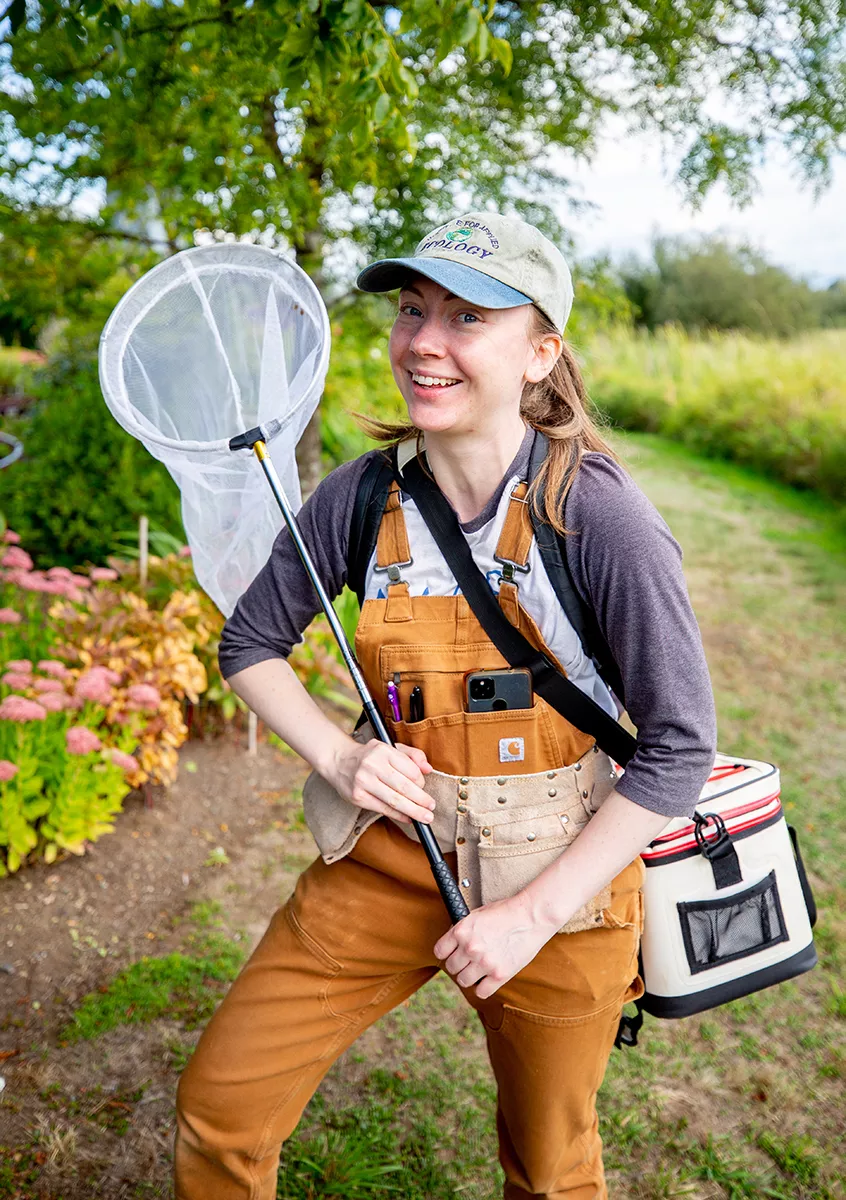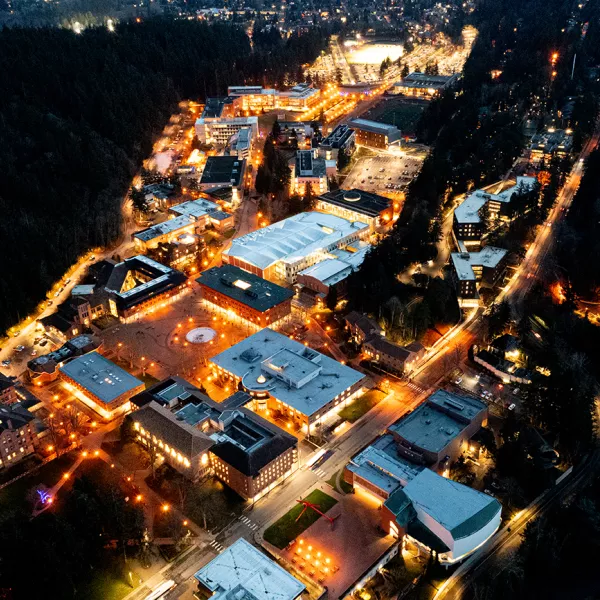But lowland bumble bees are vital to local pollination: They are able to fly in cooler temperatures and lower light conditions than honeybees, so they have an oversized role in jump-starting the pollination of early crops and native plants, especially in the cooler days of spring.
Jolliff and their group stalked bees in several locations throughout Whatcom and Skagit county lowlands.
“Each (research) site has little areas, and we use a random number generator to divide them up,” Jolliff says.
The group had sites on WWU’s Bellingham campus – such as the Outback Farm or in the plants surrounding Old Main – as well as sites in Lake Whatcom Park and South Fork Park in Whatcom County, Discovery Garden near Mount Vernon, and more.
At each of these sites, Jolliff and their fellow students started a timer and try to catch as many bees as they could within a set amount of time.
“Once we have a bee in the net, we secure the net and pause the timer. Then we put the bees in a tube and then into a cooler. We will usually also take a picture of the cap of the tube that’s got our initials and a letter indicating what flower we caught it on,” Jolliff says. “After the timer is up, we take them out of the coolers and take photos of them.”
Putting the bees into a cooler makes them fall asleep and puts them into a “mini hibernation,” Jolliff says. They add that the typical practice for other pollinator surveys is lethal sampling, which is especially unfortunate when the bee species being surveyed are at risk of extinction.






